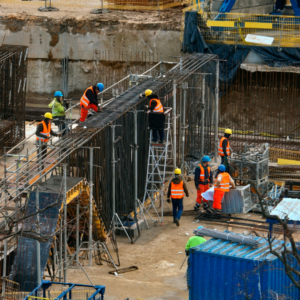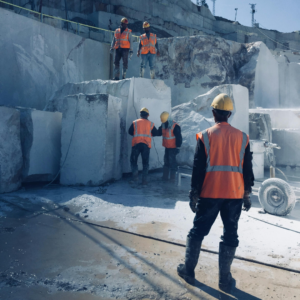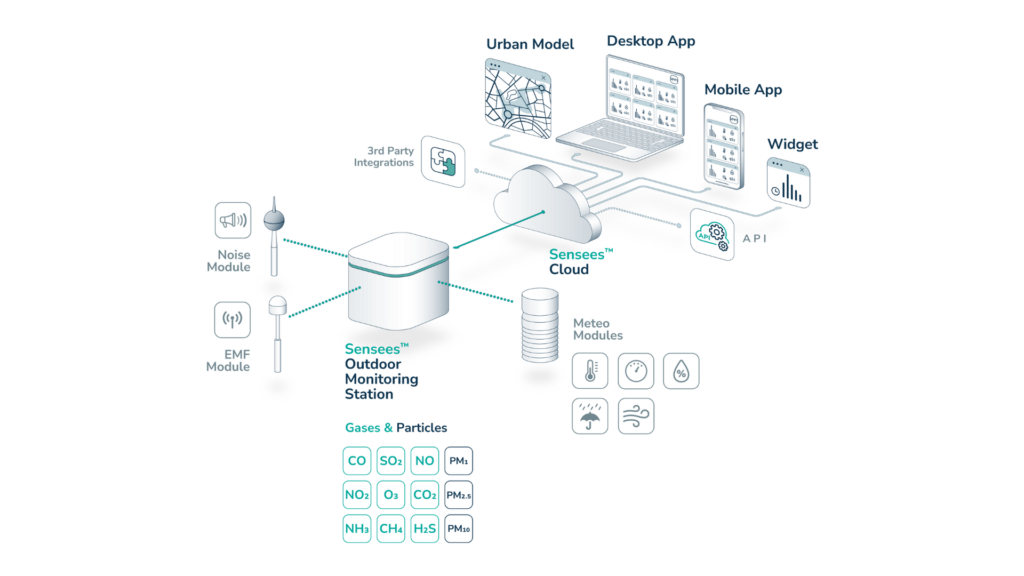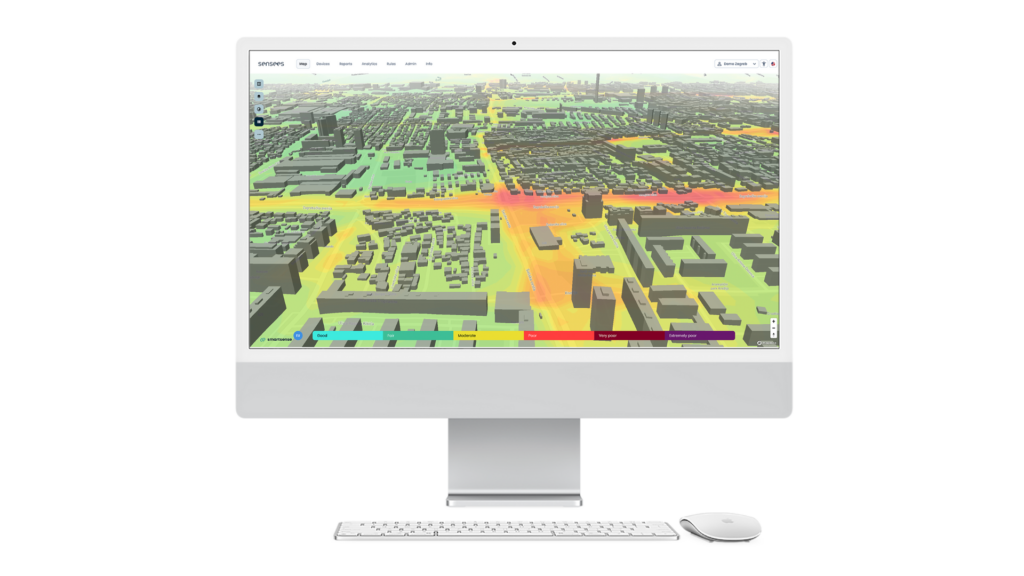The Invisible Threat to Industrial Success
In industrial sectors like manufacturing, construction, energy and utilities, mining and quarrying, transportation, and agriculture, success often depends on efficiency, productivity, and workforce well-being. Yet, one crucial factor remains overlooked in many operations: air quality. From respiratory health issues in workers to machinery degradation, poor air quality poses a significant risk to industrial performance.
Air pollution is not just an environmental issue; it’s a business risk. According to the World Bank, air pollution costs the global economy approximately $5 trillion annually in welfare costs. For industry owners, this translates to lost productivity, increased healthcare costs, and in some countries potential regulatory fines.
The Industrial Toll of Poor Air Quality

Productivity Under Pressure
Manufacturing environments are often filled with dust, chemical fumes, and different gasses and particles. Poor air quality in these settings has been linked to increased sick leaves and decreased productivity. A study by the Harvard Business Review found that improved indoor air quality can enhance cognitive performance by up to 61%, directly influencing productivity on the factory floor.
Furthermore, airborne particulates can damage sensitive machinery, leading to increased downtime and maintenance costs. Advanced air quality monitoring systems, like Sensees Indoor, offer real-time data. With such data and reliable insights factory managers can create targeted activations that can protect both workers and equipment.
The Dusty Reality
Construction sites are well known for high levels of particulate matter (PM2.5 and PM10) in a form of something called respirable crystalline silica – very small particles that are at least 100 times smaller than ordinary sand you might find on beaches and playgrounds. It is created by ongoing digging, drilling, grinding and material handling happening in construction areas. Chronic exposure to such pollutants has been linked to respiratory diseases, with the U.S. Occupational Safety and Health Administration (OSHA) estimating that silica dust alone causes 2 million construction workers to face serious health risks each year.
Using air quality monitoring systems enables site managers to mitigate risks by adjusting work schedules based on real-time pollution levels data, safeguarding the health of workers while maintaining project timelines.


Managing Emissions for Efficiency
Power plants and utility services face rigorous environmental regulations. Emissions from fossil fuels not only harm the environment but also lead to pretty expensive fines if standards are not met. According to the Environmental Protection Agency (EPA), U.S. power plants spend billions annually to comply with air quality standards.
With Sensees air quality monitoring system, energy sector managers can track emissions more precisely, helping to maintain compliance and improve operational efficiency by identifying emission spikes early.
Digging Deep, Breathing Hard
Mining operations are synonymous with dust, gases, and other airborne pollutants. Prolonged exposure to these elements can lead to diseases like pneumoconiosis, a chronic lung condition affecting miners worldwide.
Advanced air quality monitoring solutions provide real-time data on particulate levels and toxic gases, helping mine operators gain valuable insights and implement targeted strategies for improving worker safety. According to the International Council on Mining and Metals (ICMM), companies that invest in health and safety technologies report 20% fewer lost-time injuries.


Navigating Pollution Challenges
Transportation hubs, including ports, airports, and highways, face unique air quality challenges due to vehicle emissions and industrial activity. International Council on Clean Transportation estimates that air pollution from this sector results in approximately $1 trillion in health damages annually.
Sensees Outdoor monitoring stations provide real-time, hyperlocal air quality data, enabling transportation managers to optimize traffic flow and reduce idling times, which can significantly cut down emissions. This not only improves community relations but also reduces the risk of non-compliance with environmental regulations.
The Air We Grow On
Agriculture is both a contributor to and a victim of poor air quality. Dust, pesticides, and methane (CH4) emissions degrade air quality, while pollutants like ozone (O3) can damage crops and reduce yields. Research by the U.S. Department of Agriculture (USDA) indicates that high ozone levels can reduce crop yields by up to 10% annually.
Implementing outdoor air quality monitoring with systems like Sensees allows farmers to gain insights needed to adjust practices such as pesticide application and irrigation to minimize pollution impact, safeguarding both crops and farmworker health.

The Business Case for Investing in Air Quality Monitoring
The economic benefits of maintaining good air quality are substantial. Improved worker productivity, reduced absenteeism, and compliance with environmental regulations are just the tip of the iceberg. The European Commission has highlighted that investments in air and water quality yield substantial returns across various sectors, including health, energy savings, food production, industry, and biodiversity. Specifically, proposed regulations are expected to reduce deaths from PM2.5 pollution by over 75% within a decade.
How Sensees Technology Makes a Difference:
Sensees Outdoor Monitoring System: Provides real-time data on gasses, pollutants, meteorological conditions as well as noise and EMF levels enabling industry owners to make informed decisions to protect workers and optimize processes.

Sensees Model: Uses advanced machine learning and AI models trained on global data to provide precise air quality assessments and pollution forecasts.

These systems offer hyperlocal insights and personalized exposure assessments, helping industries to minimize risks and optimize operational efficiency.
Real-World Applications and Success Stories:
CME – Construção e Manutenção Electromecânica, S.A.
As a part of the Smart Roadside Safety project in Portugal which aimed atmeasuring air pollution and noise levels caused by ongoing traffic CME used customised Sensees Outdoor Station to gain data for intelligent traffic management.
Messer is a company that invests in social responsibility and raising environmental awareness in the industry. They are using our Sensees Outdoor system for detailed air quality insights and transparent communication with employees and citizens.
Companies that prioritize air quality not only enhance worker satisfaction but also improve their bottom line. A healthier workforce is a more productive workforce, reducing turnover rates and healthcare costs.
Public support and social responsibility
Industries of today face one more very important challenge – they are expected to uphold environmental responsibility while maintaining operational efficiency. Implementing industrial air quality monitoring systems, such as Sensees Outdoor and Sensees Model, allows businesses to proactively detect pollution levels—even in the harshest environments—helping them in taking necessary steps to reduce harmful emissions.
Beyond just meeting legal requirements, real-time air quality data strengthens public trust by demonstrating transparency and a commitment to sustainability. With growing pressure from regulators, stakeholders, and communities, now is the time for industries to take action, integrating advanced monitoring solutions that safeguard both the environment and their long-term reputation.
Working Smarter = Breathing Easier
For industrial sector owners, the stakes are high. Poor air quality is not just a health issue; it’s a business liability. Investing in advanced air quality monitoring systems like Sensees Outdoor and Sensees Model empowers industries to turn air quality from a vulnerability into a strategic asset.
By protecting worker health, optimizing equipment performance, and ensuring regulatory compliance, air quality monitoring can help in providing tangible financial returns. In an era where sustainability and efficiency go hand in hand, the choice to invest in cleaner air is not just good ethics; it’s good business.


